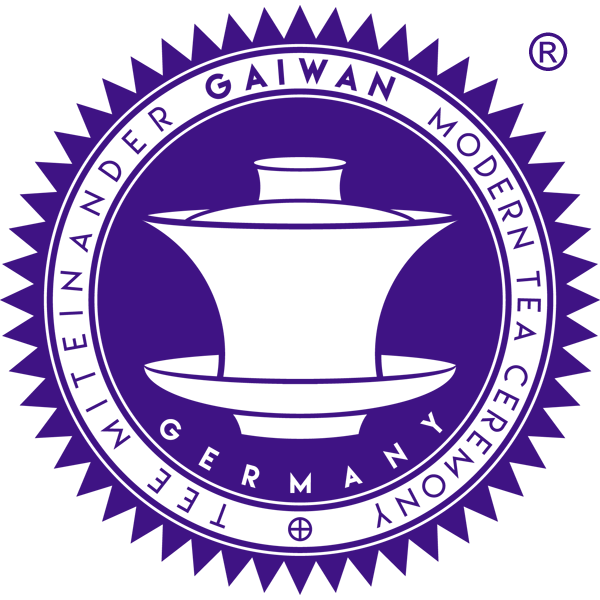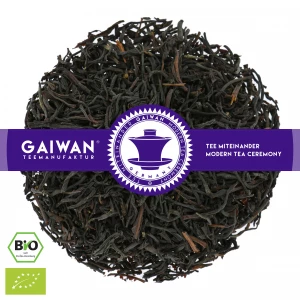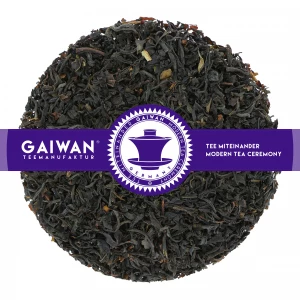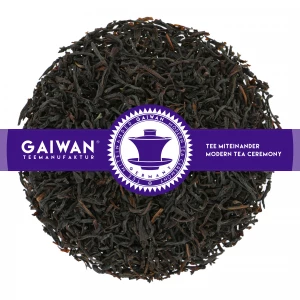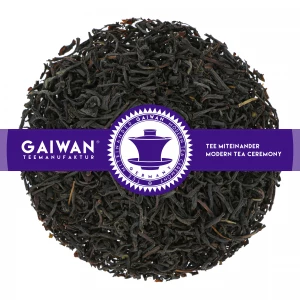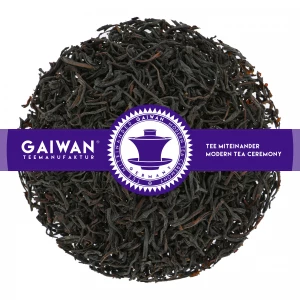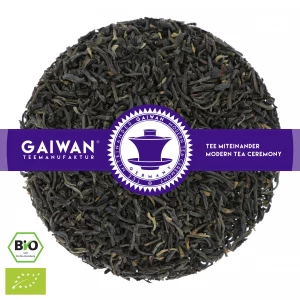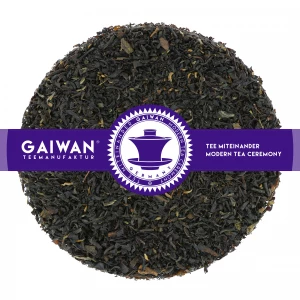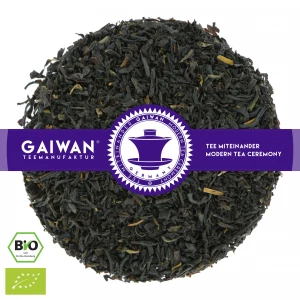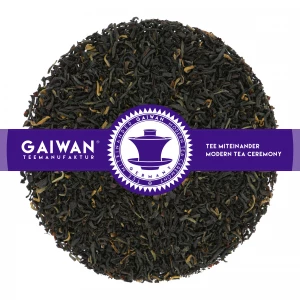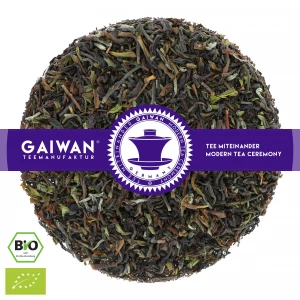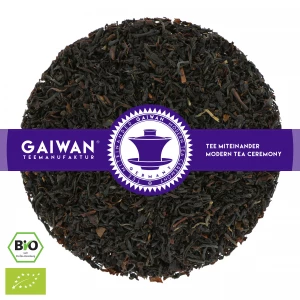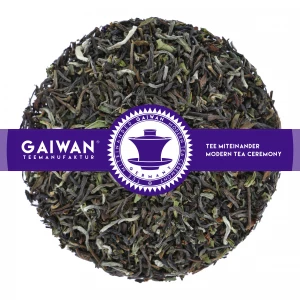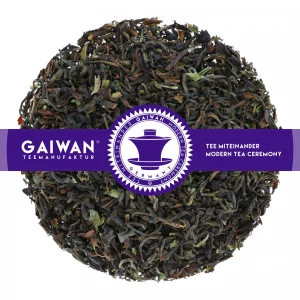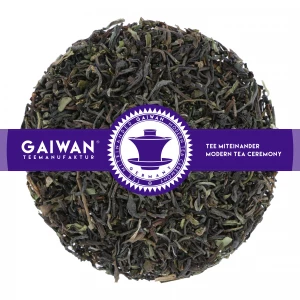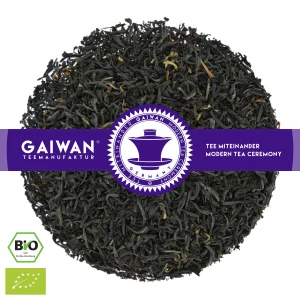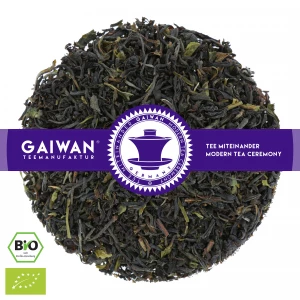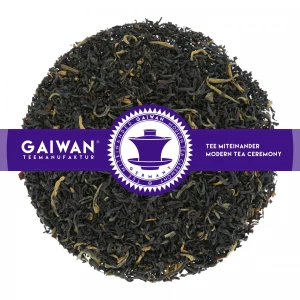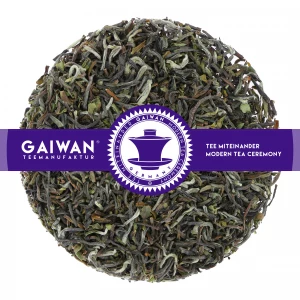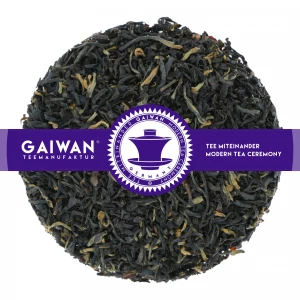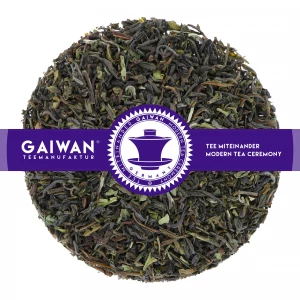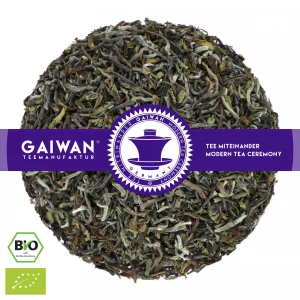Indian Tea by Leaf Grade
The leaf grade is a quality characteristic typically used for black teas from India. It is an indicator of the production, appearance and taste of a tea.
- Orange in Orange Pekoe stands for royal.
- Pekoe denotes short and thick leaves, usually with white hairs on the underside.
- Broken stands for broken leaf due to processing.
- Flowery stands for flowery and means the small delicate buds (tips).
- 1 denotes an even more special quality.
- Special denotes the very best quality.
- Golden stands for the golden shimmering leaf tips, which make the tea even finer and milder.
- Tippy denotes the tea types that contain a particularly high proportion of golden and white leaf tips.
The teas can be ranked by quality and price category as follows up to the very highest quality SFTGFOP1:
| * | |
| OP | Orange Pekoe |
| BOP | Broken Orange Pekoe |
| GBOP | Golden Broken Orange Pekoe |
| FBOP | Flowery Broken Orange Pekoe |
| FOP | Flowery Orange Pekoe |
| GFBOP | Golden Flowery Broken Orange Pekoe |
| GFOP | Golden Flowery Orange Pekoe |
| TGFBOP | Tippy Golden Flowery Broken Orange Pekoe |
| TGFOP | Tippy Golden Flowery Orange Pekoe |
| FTGFOP |
Fine Tippy Golden Flowery Orange Pekoe |
| FTGFOP1 |
Fine Tippy Golden Flowery Orange Pekoe 1 |
| SFTGFOP |
Special Fine Tippy Golden Flowery Orange Pekoe |
| SFTGFOP1 |
Special Fine Tippy Golden Flowery Orange Pekoe 1 |
Tea is a beverage with a rich and layered history. From its discovery in China to its spread across the globe, tea has become a symbol of culture, hospitality, and enjoyment. An integral part of this fascinating history is the grading system for tea leaves, particularly for black tea from India and Sri Lanka. This system is an essential aspect of tea culture and serves as a quality marker for the fineness of the tea.
The modern grading of tea leaves has its roots in the 19th century when the British began cultivating tea in India and Sri Lanka. The British established a system to classify tea based on the appearance of the tea leaves. Over time, this system was refined and standardized, and it is now recognized worldwide.
The grading of tea leaves is done based on their size, shape, and quality, with certain terms used to describe the different grades. "Orange Pekoe" is one of these terms and refers to whole, unbroken tea leaves. Although the name "Orange" suggests it might be a color reference, it actually refers to the Dutch House of Orange, signifying "royal" or "of the highest quality". Pekoe, on the other hand, comes from Chinese, referring to the white down on the young tea leaves.
The further terms in the grading, such as "Broken", "Flowery", "Golden", and "Tippy", refer to specific characteristics of the tea leaves. "Broken" means that the leaf has been broken during processing, while "Flowery" points to the small, tender buds of the tea. "Golden" refers to the gold shimmering leaf tips that make the tea especially fine and mild, and "Tippy" marks tea varieties with a particularly high proportion of these golden and white leaf tips.
The numbers and the word "Special" in the grading indicate the quality of the tea. A 1 after the grade denotes an even higher quality, while the word "Special" signifies the very best quality.
With this understanding of the grading system, tea drinkers can better assess the quality and characteristics of the tea and make their choice based on personal preferences. Although this system was originally developed for grading black tea from India and Sri Lanka, it is used in a similar way today for teas from other regions and for other types of tea like green or white tea. Thus, it remains an important part of tea culture and history and a symbol of the continuous refinement and appreciation of this wonderful plant.
-

-
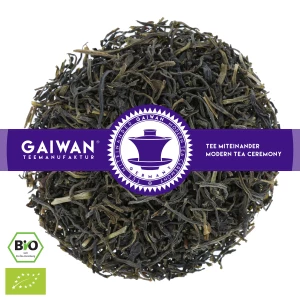
-
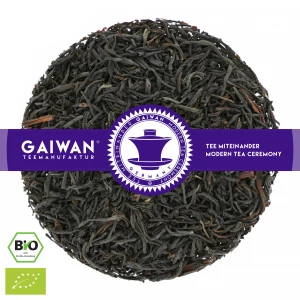
-
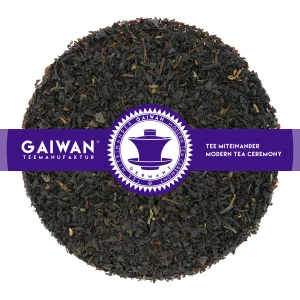
-
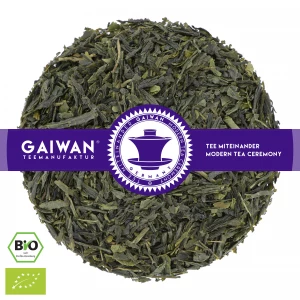
-
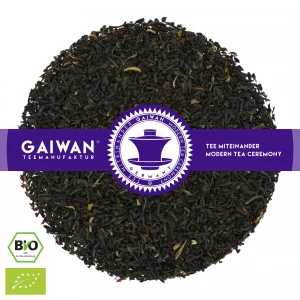
-
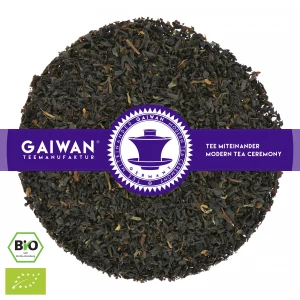
-
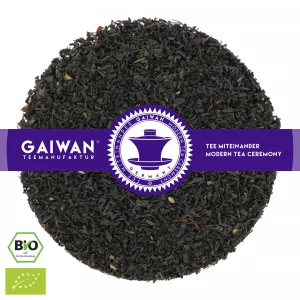
-

-

-

-

-

-

-

-

-

-

-

-

-

-

-

-

-

-

-

-

-

-

-

-

-

-

-

-

-

-

-

Organic loose leaf black tea "Darjeeling Seeyok SFTGFOP1" - GAIWAN® Tea No. 1189
€16.99Out of stock
